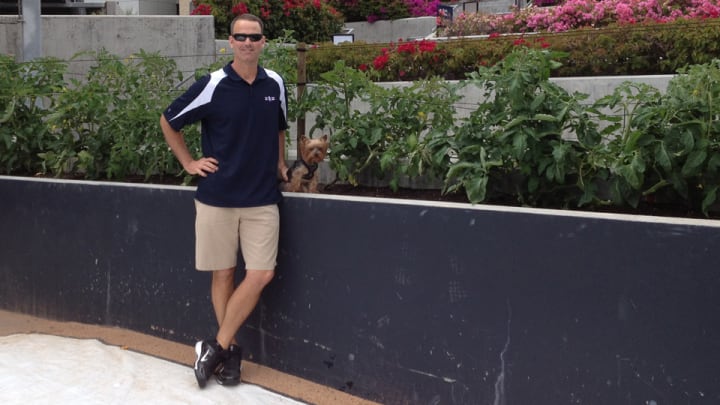In Petco Park garden, Padres pick peppers that pack plenty of heat

The Padres' pitchers pack plenty of heat in the bullpen—hot pepper style, of course.
Luke Yoder, Petco Park’s director of field operations, is entering his fourth season tending his Padres garden, growing patches of produce in the home bullpen, visitors’ bullpen and under the batter’s eye.
“If you name it, we’ve grown it or have it,” Yoder tells SI.com.
But in the summer, Yoder turns to his specialty: hot peppers. These prized plants take root in the home bullpen. Last season, he had 18 varieties from 15 countries. “Most are hot, packing heat,” Yoder says. “The pitching coaches and players like to play with them and pop one every once in a while to get them going.”
Power Rankings: Tigers take No. 1 spot after season's first week
The range of peppers includes the Trinidad Moruga Scorpion—once believed the hottest pepper in the world at 1.25 million Scoville Heat Units—right down to a more mundane jalapeño that register only 15,000 to 30,000 heat units. The peppers have even drawn the interest from concessionaire Delaware North’s head chef, who has taken some of them and worked them into ballpark dishes. “When you have a hot pepper, it can go a long way,” Yoder says. The Padres’ peppers—along with the tomatoes grown under the batter’s eye—have given life to vats of salsa for new dishes, such as the sweet and spicy bullpen relish for a burger or the strikeout salsa that topped a pork belly taco.
Yoder started his growing four seasons ago, beginning in just the home bullpen, even if the Sports Turf Managers Association member spends plenty of time maintaining his all-organic patches.
“I was having a conversation with the head chef at the time,” he says. “He thought it would be cool and would love to use it.” With a bachelor of science from Clemson in horticulture and a history of ballpark garden plots when he worked for the Cubs' Triple A affiliate, Yoder cut out a small area in Petco Park and started planting. Over time, he added dwarf citrus trees in the visitors’ bullpen and plants under the batter’s eye, eventually maxing out his growing space.
How much higher can Pujols climb on career home run leaderboard?
Yoder mixes the plants based on the season and light requirements, having grown blueberries, avocados, pomegranates, lettuce, beets, onions, garlic, carrots and radishes, to name a few. “I stick with the stuff that people like,” he says. “I have something out there for most of the season. We always have something to pick.” The grounds crew, front office personnel and players—some more into it than others—enjoy the bounty of the garden, when the head chef isn’t swinging by to create a new salsa.
And Yoder isn't alone in the NL West garden game. The Giants picked up plenty of press in 2013 for their dedicated garden space in the outfield, and the Rockies have a garden on the Coors Field grounds. But Yoder was doing it first, and he’s not stuck in a rut. This year, a couple of the Padres' Hispanic pitchers requested plants with which he wasn’t familiar. But they brought seeds to give him a start.
Yoder is up to the gardening task, looking for whatever ups the heat in the Padres’ bullpen.
Tim Newcomb covers stadiums, design and gear for Sports Illustrated. Follow him on Twitter at @tdnewcomb.
